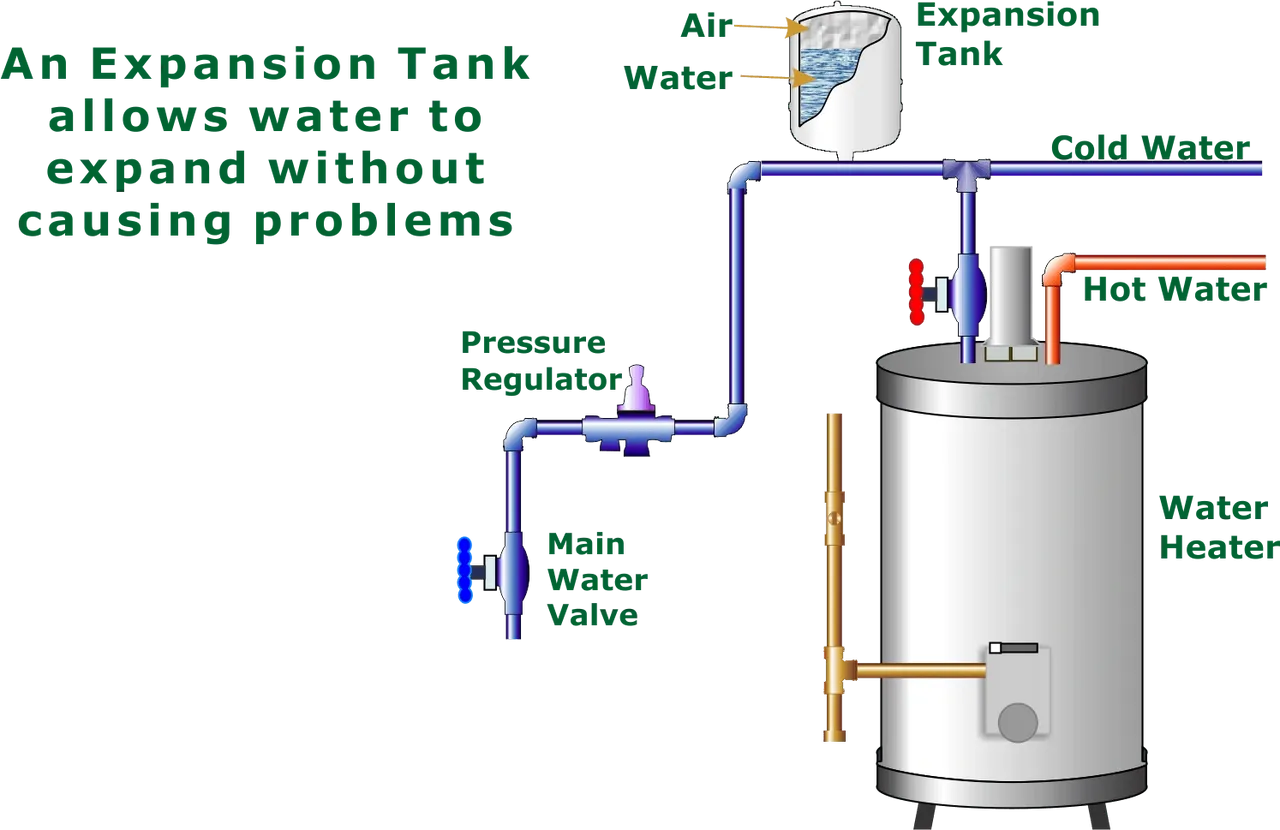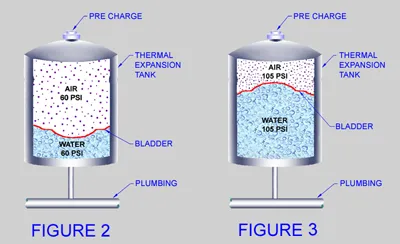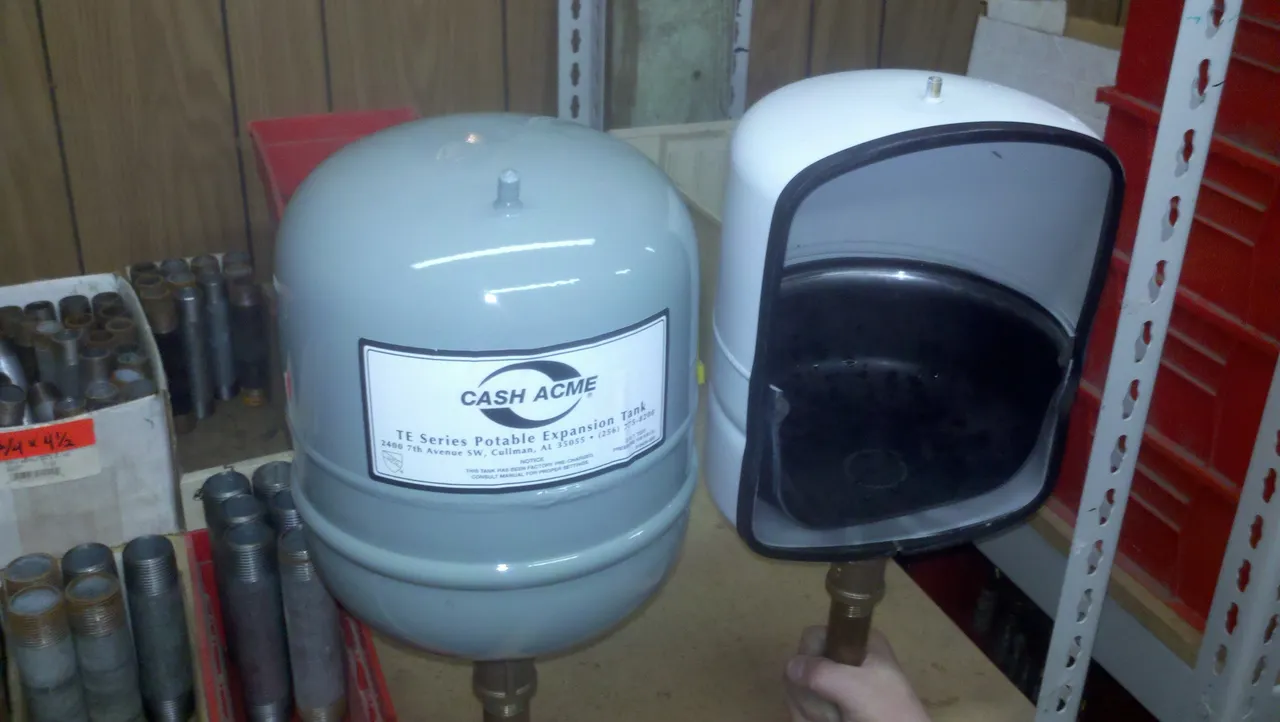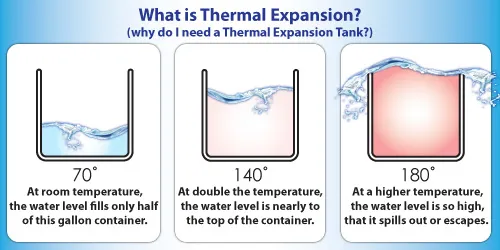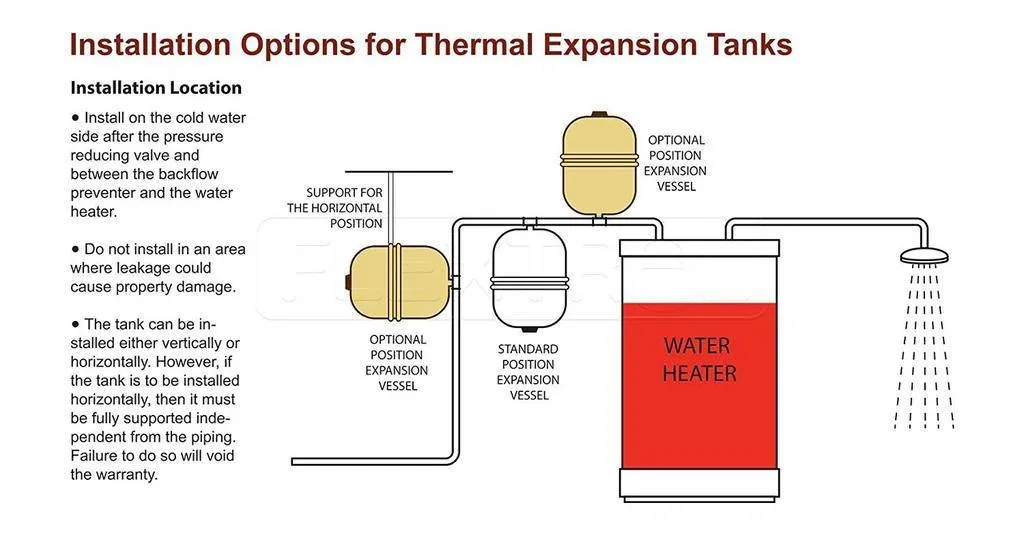Thermal Expansion Tank

Thermal Expansion Tank Q&A
A1: A thermal expansion tank is a safety device used to help minimize the risk of pressure damage to the plumbing system. Since water expands when it is heated due to thermal expansion, the water heater creates extra water volume every time it heats water. The thermal expansion tank serves as an overflow receptacle by absorbing excess water volume created by the tank water heater.
A2: A closed plumbing system is one in which potable water has no way to exit a home's plumbing. A closed system can be identified by any system that has a one-way valve (such as a back flow valve, check valve, or pressure reducing valve) designed to prevent water from expanding back into the city water supply. In almost every case a home has a closed system because even in the event the home didn't have a pressure regulator or some type of device to keep water from back flowing, your local municipality typically have double check valves in your meter setter to prevent any type of cross contamination back into the public water supply.
A3: Water doesn't compress very much at all when subject to pressure. When water is heated it expands in volume. For a home water heater, this means that when a full tank of water is being heated up, it may require more space than is available in the tank. The pressure added to a closed system by thermal expansion can wear out seals, damage solenoid valves (like those found on washing machines,dishwashers) and even rupture household plumbing. Water heaters can find their life severely shortened thanks to the added stress. In extreme cases, increased pressure in a gas or propane powered water heater can cause the flue inside to collapse, creating a carbon monoxide leak.
A4: Expansion tanks feature a rubber bladder or diaphragm that separates an air chamber from the rest of the tank. Air is pumped in to match the pressure of the water supply coming into the home. When water expands, instead of building pressure in your water heater or plumbing, it enters the expansion tank, compressing the air. Once expansion has stopped and there's room, the compressed air pushes the water back into the supply.
A5: Expansion tanks should be installed on the incoming cold water supply line, before the water heater. The tank can be installed either horizontally or vertically but be sure to check manufacturer instructions.
A6: Universal plumbing code requires that a thermal expansion device be installed whenever a PRV or back flow prevention is present. This usually comes in the form of an expansion tank that connects to the water heater, accommodating volume increases. Having an expansion device protects and pro longs the life of your water heater, household plumbing and fixtures.
A7: Most plumbing codes require both residential and commercial plumbing systems have ways to accommodate water heater thermal expansion. But, it is the property owners responsibility to determine through their own inspection or the inspection of a certified plumber whether or not they are vulnerable to thermal expansion. If you already have an expansion tank or you are planning to have one installed, the property owner is the one responsible for maintaining that expansion device.
